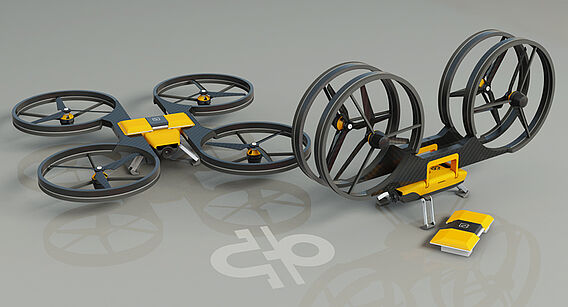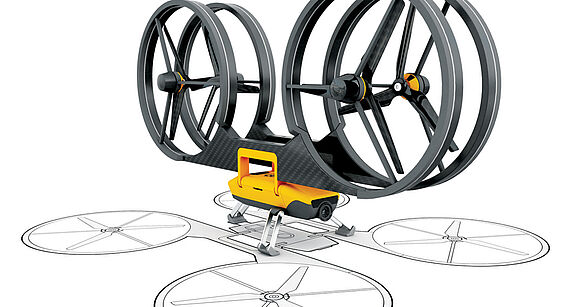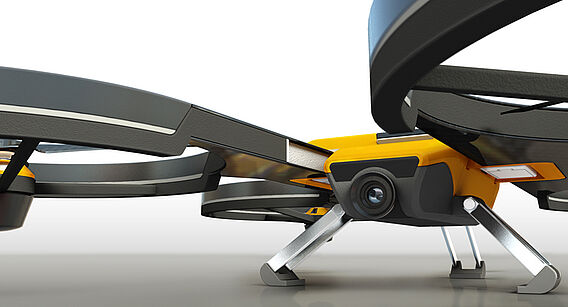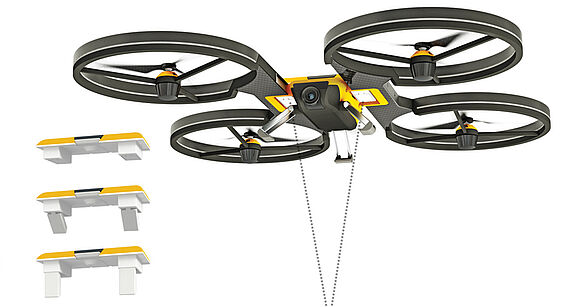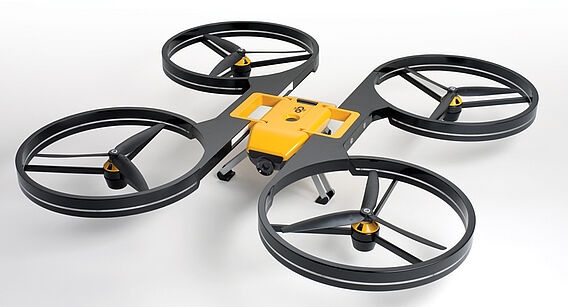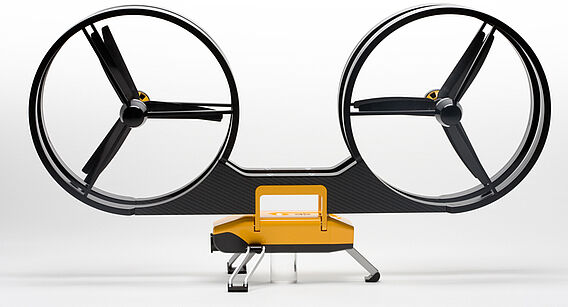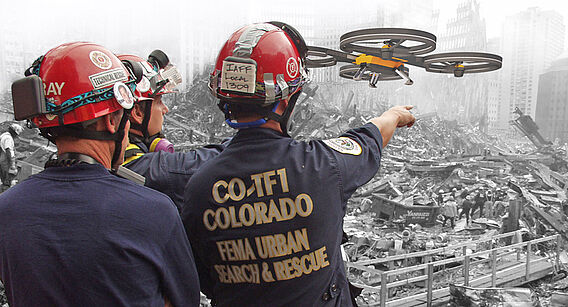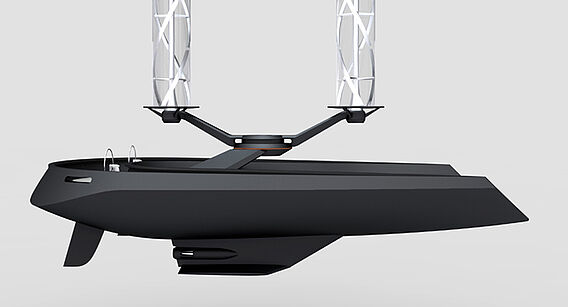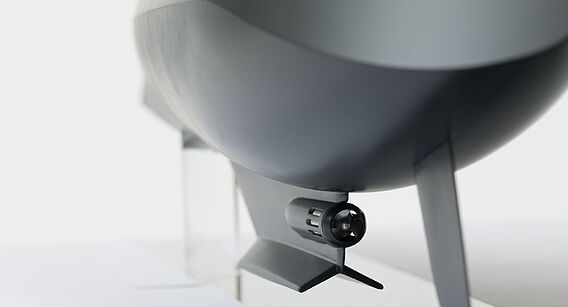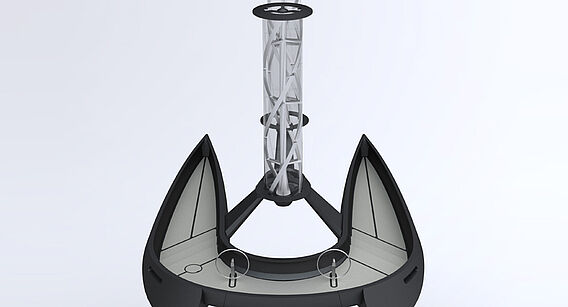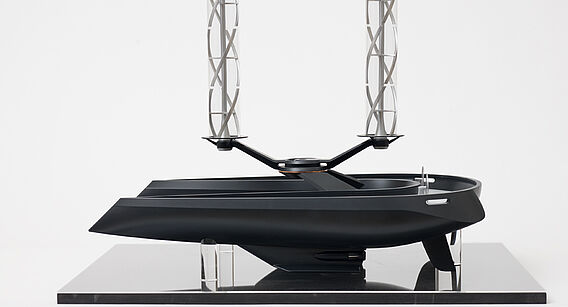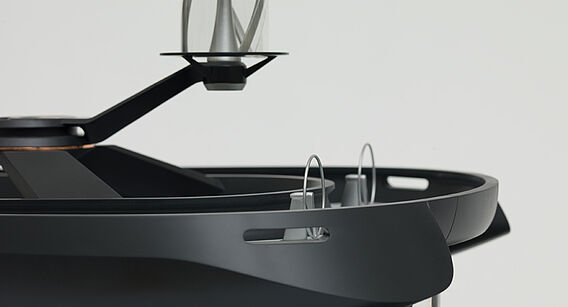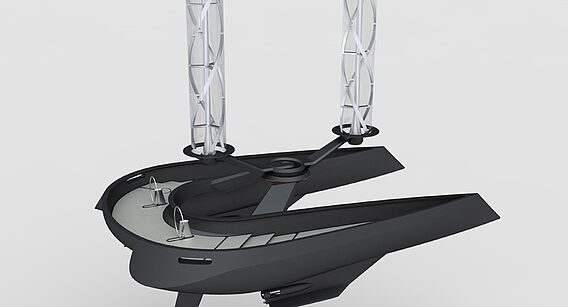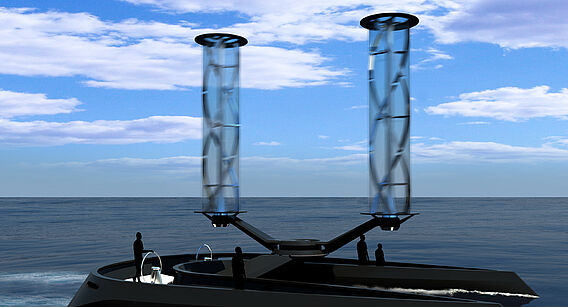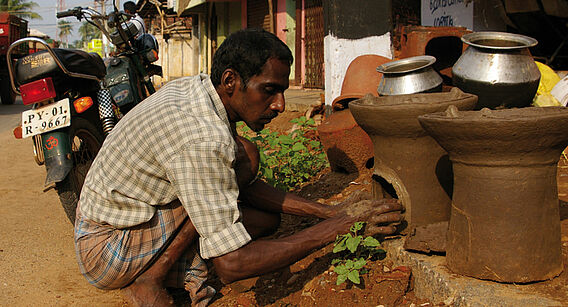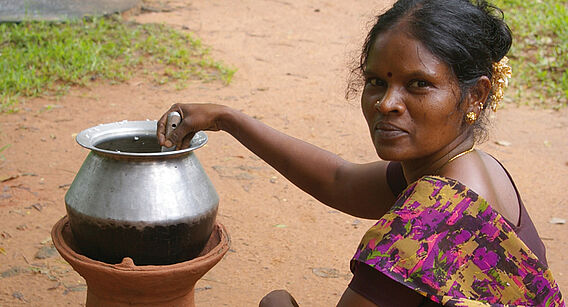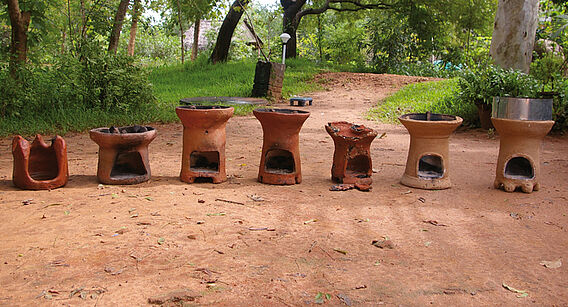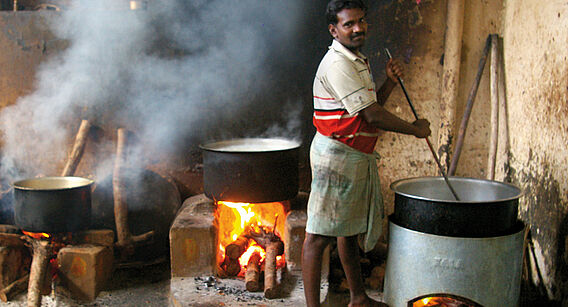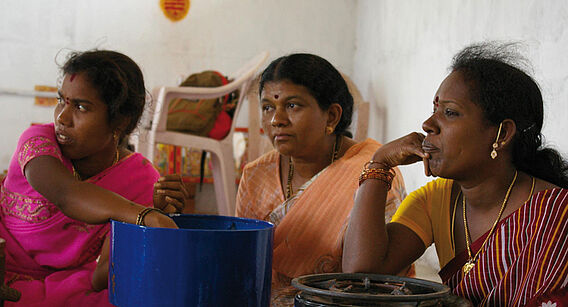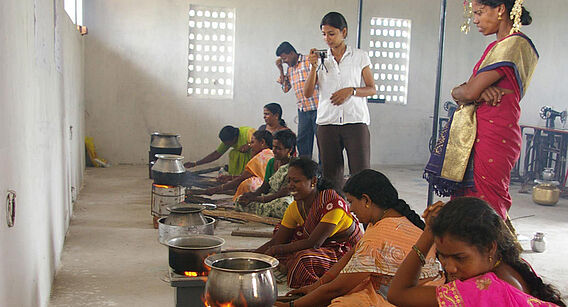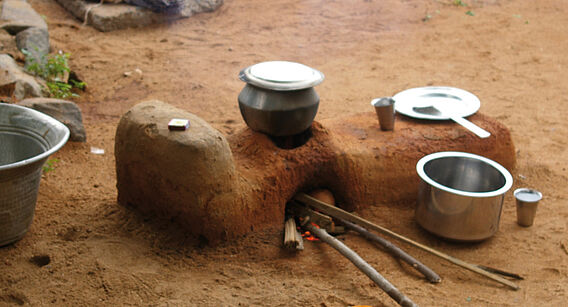CHO – a mobile flight unit for disaster relief
CHO is a flexible positioning system that can be used to enhance the safety and efficiency of search missions. By means of diverse functional modules, CHO can be extended and, thus, be used to accomplish various tasks, including positioning and cartography, in diverse phases of disaster operations. Thanks to its folding mechanism and light weight, CHO can be moved and stored with ease.
Positioning persons during disaster relief operations is a new area of use for the quattrocopter. Since the majority of unmanned flight devices originate in military environments, CHO ’s design deliberately was chosen to avoid a martial appearance. Its colors and materials are suitable for disaster relief, providing good visibility and robustness in harsh environments.
